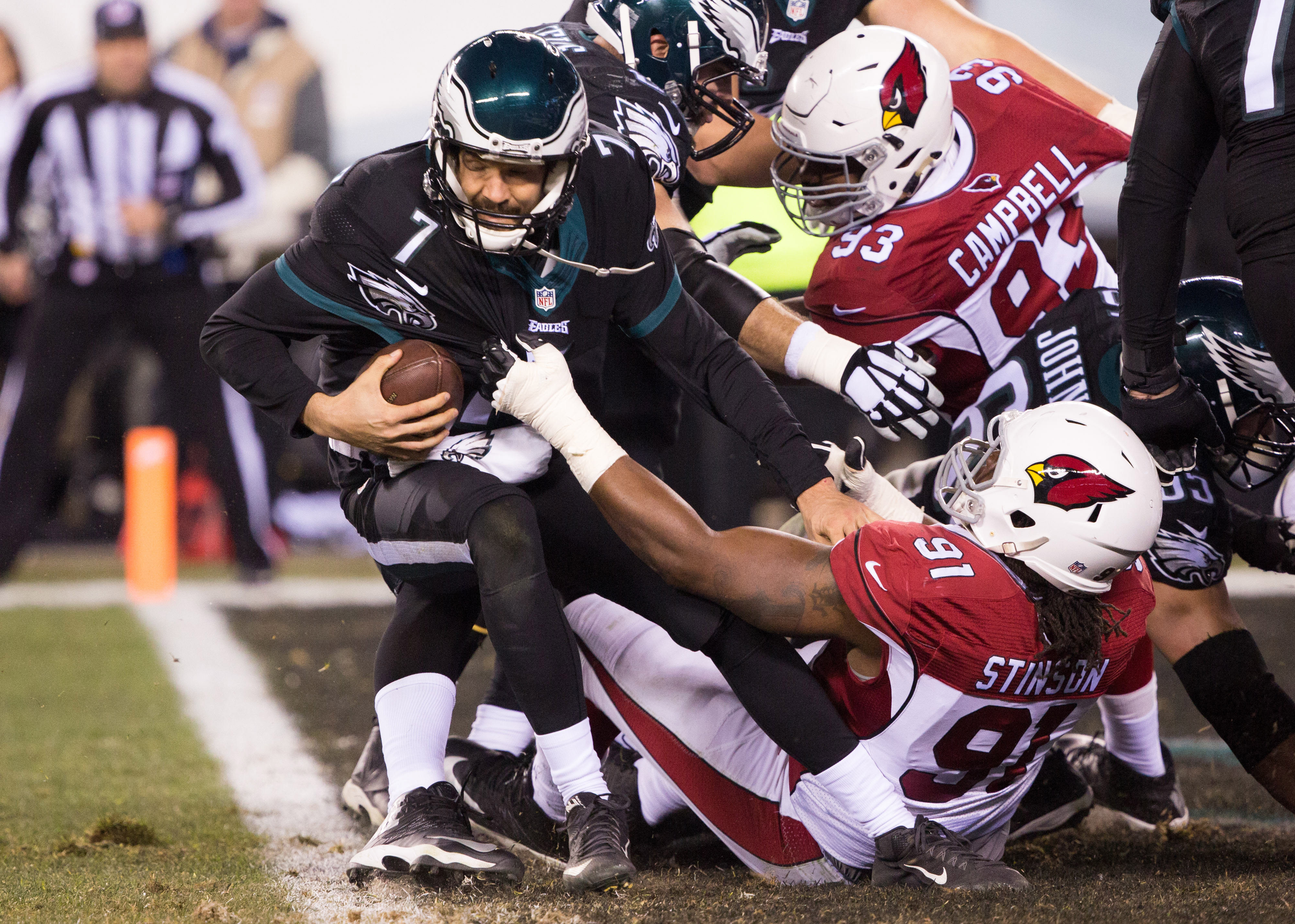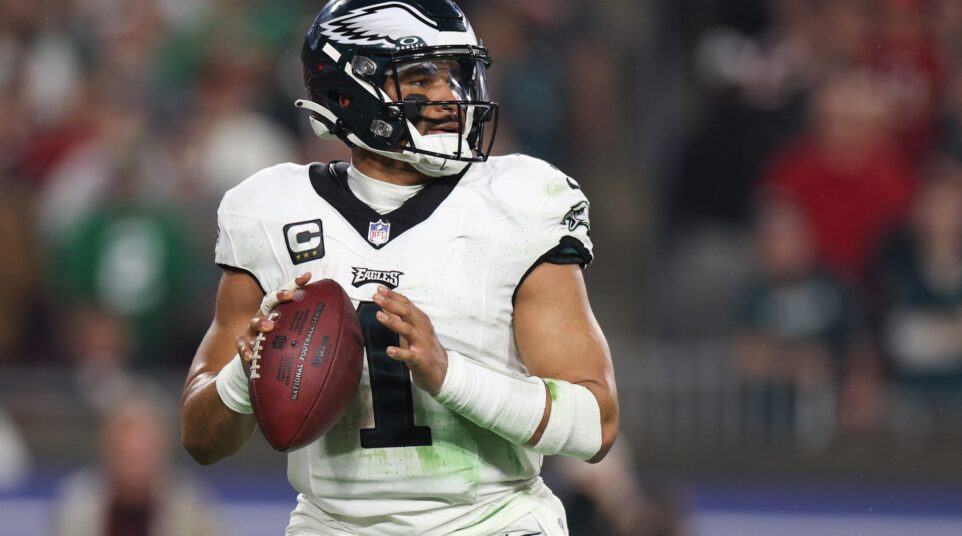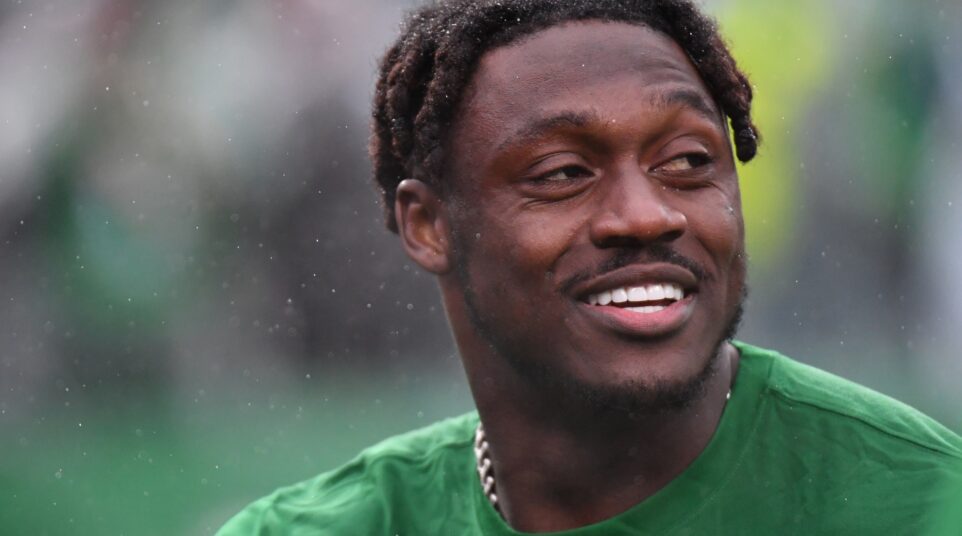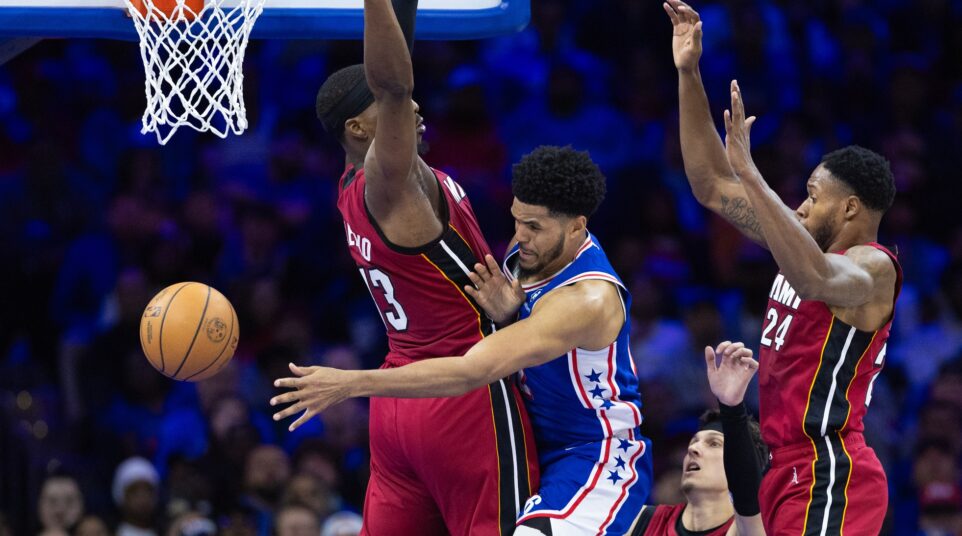
Eagles - Cardinals: 4 Developments
The Eagles made this game more interesting than you might have expected, well into the third quarter, even as defensive backs dropped like flies. Then they started turning the ball over and giving up big runs, and the Cardinals blew them out.
Which is exactly what you would expect with an 11-2 team playing a 6-7 team. This would have been an upset comparable to the Patriots game if the Birds had pulled off the victory. Keeping it close for a while mostly just made it more painful when the predictable collapse arrived.
So what did we learn, good and bad? Here are some new developments from tonight’s game.
1. DeMarco Murray dropped off the two-deep roster.
Though he was no longer the most-used back last week against the Bills, DeMarco still had the second most carries in that game and appeared to be part of a balanced three-way rotation.
Last night, that all went away. Murray didn’t get a carry until the second half and was an afterthought at best. So, when he finally did get the ball, did he come in all angry and fresh and rip off big runs? Nope. He ran twice for a grand total of three yards.
I don’t know if he mouthed off to the coaches, or they just finally admitted that he sucks and feeding him more snaps isn’t going to fix it.
Unfortunately, Ryan Mathews didn’t exactly seize the opportunity to cement himself as the number one back. He piled up 58 yards on 11 carries, including a 20 yard gain, but also fumbled away a drive, and miscommunicated with Sam Bradford on a short pass, leading to a pick six. And he failed to get the first down on a fourth-and-one at the Arizona 8, though the play call and blocking had a lot to do with that.
2. Josh Huff stepped up a bit.
He didn’t exactly go crazy, but Huff caught all four of his targets for 52 yards and three first downs, plus solid kickoff returns (including one out to the 44-yard line). Huff hasn’t been targeted much this year, despite the lack of production from other WRs, but he’s been very efficient with 22 receptions and 13 first downs on just 32 targets. Hopefully this is a sign that his role is increasing.
3. Tackling fell apart.
Arizona’s 11-2 record has a lot to do with the growth of its run game this year, to balance its always strong passing attack. Maybe it was end-of-season exhaustion, minor injuries, or a sense that the game didn’t matter, but the Eagles were hot and cold at best against the run. By the end of the game, missed tackles piled up like giant stacks of cordwood and spilled onto the passing game. After the game, Chip called it “the biggest disappointment” of the game.
224-pound rookie David Johnson has improved steadily since Chris Johnson got injured, but tonight he absolutely exploded with 187 yards and 3 TDs, essentially doubling his stats for the year.
The bad tackling was brutally obvious on Johnson’s 47-yard touchdown with five minutes left in the first half. Pretty much every single Eagle tried and failed to tackle him on that one play. From there, things deteriorated. Kiko Alonso was juked twice by Johnson on one play. EJ Biggers just bounced off WR John Brown at the 10, allowing him to run in for a touchdown. Mychal Kendricks flat out whiffed on a couple of tackles. Etc. Etc.
The Birds need to fix this crappy tackling immediately if they don’t want to be humiliated in their final two games against division rivals.
4. Sam Bradford showed something stuff.
Unfortunately some of the stuff was crap– late in the game when he threw two interceptions (one for a touchdown) and fumbled on a strip sack. But he played well otherwise.
He was accurate and efficient with his passes, stood tall in the pocket while taking hard shots (as he has all year), and even ran a little. (His one carry netted four yards, more than DeMarco got with two.) Even noted Bradford skeptics were talking him up, especially when he fought through a sack to avoid a safety, then hit Josh Huff for a 22-yard first down under pressure.
Credit where it’s due, Bradford has looked better so far tonight than I’ve seen all year.
— Brian Solomon (@Brian_Solomon) December 21, 2015
Amazed Bradford made his way out of the end zone, then found Huff on the next play. This is a different QB.
— Brian Solomon (@Brian_Solomon) December 21, 2015
Of course everything returned to normal after his second half turnovers.
So about all those nice things I said tonight about Bradford…
— Brian Solomon (@Brian_Solomon) December 21, 2015
Really, the end of Sam Bradford’s one-year tryout for the job of Eagles QB is probably the most important thing that’s going to happen in the rest of this season. They might make the playoffs and get killed by Seattle, or not and get a better draft pick. Each has its advantages, and the difference probably won’t much matter in five years.
But the decision to sign Bradford to a long-term deal or let him go will still be affecting the Eagles in 2020. So let’s look at the situation a bit more closely.
Many people would happily be done with him today, or at least next spring. If you look at full season statistics, he’s near the bottom of the NFL, in the mid-20s in most categories. But that ignores his real progress over the year, and the serious problems this team had (especially on the offensive line) early on.
Bradford continues to trend up, though the turnovers tonight muddle the picture a bit. But he’s learning the system, finding receivers, and making some remarkable throws within it, such as his back shoulder pass to Celek for a very tough first down. He handles pressure and takes hits well, and is even starting to scramble a bit.
The available veterans on the other hand (RGIII, Kaepernick, Foles, Osweiler) are trending down, and rookies are a big risk. A very low percentage ever succeed, and there are no Mariota’s or Winston’s this year. Even the guys touted as surprise successes recently — Tyrod Taylor and Teddy Bridgewater — are getting second thoughts from writers and fans. And they were one in ten risks that paid off.
Let’s say you do guess correctly which QB in the draft to get, say Carson Wentz. He won’t be ready to lead an NFL franchise on day one coming out of North Dakota State. But if you don’t sign Bradford, your choices are him or Sanchez. It’s going to be ugly either way, and saving a few million dollars won’t really ease that pain.
As long as Bradford continues to improve, I think the Eagles need to stick with him (and also draft a later round longshot QB or two). Sam still has considerable upside; before Adrian Peterson’s great recovery, it was just assumed that any football player with an ACL tear wouldn’t be fully healed until his second year back.
I would still call Sam unproven at best, but if the team can sign him to a multi-year contact, perhaps giving a relatively high $20 million or so per year in return for being able to cut him at no cost after two years, then he works either way. He runs the team well as long as he continues to improve, while the coaches develop the rookie and get him up to speed.





